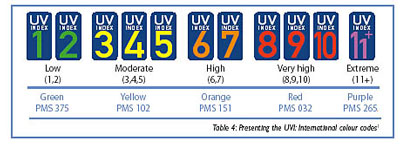Why is this Important?
Myth: Sun safety is only for hot and sunny days.
Fact: Cloud cover reduces UV levels, but not completely. Depending on the thickness of the cloud cover, it is possible to burn on a cloudy day, even if it does not feel warm. Surfaces like snow, sand, pavement, and water reflect much of the UV radiation that reaches them. Because of this reflection, UV intensity can be high even in shaded areas.
Myth: Skin Cancer is not a huge problem, there are more deadly cancers.
Fact: Skin cancer is the most common cancer in the United States. Most cases of melanoma, the deadliest kind of skin cancer, are caused by exposure to ultraviolet (UV) light. In fact, more skin cancers are diagnosed in the U.S. each year than all other cancers combined.
How Can I Prevent Skin Cancer?
Know the UV index (UVI) rate!
UVI gives an indication of the level of UV radiation and the potential danger of sun exposure.

Nearly all skin cancers could be prevented by limiting unprotected exposure to ultraviolet (UV) rays from the sun. When skin cancers do occur, most can be treated successfully if detected early—even melanoma, the most serious type. There are many ways to protect your skin from harmful UV radiation:
- Seek shade when you can.
- Avoid the sun when UV rays are strongest, generally between 10 a.m. and 4 p.m.
- Wear protective clothing.
- Generously apply sunscreen (SPF 30 or higher with broad spectrum protection), and don't let your skin tan or burn.
Listen to CDC podcasts on skin cancer and ways you can protect yourself and your family.
What is Don't Fry Day?
The National Council on Skin Cancer Prevention has designated the Friday before Memorial Day Don't Fry Day to encourage sun safety awareness.
